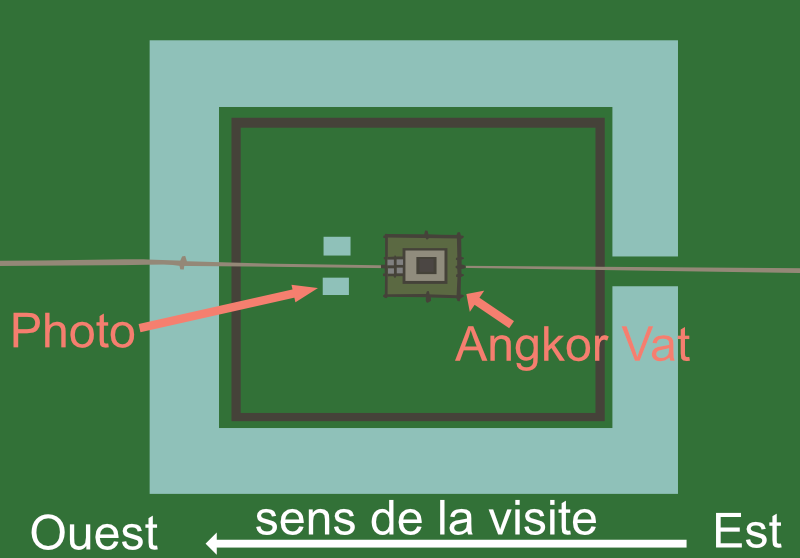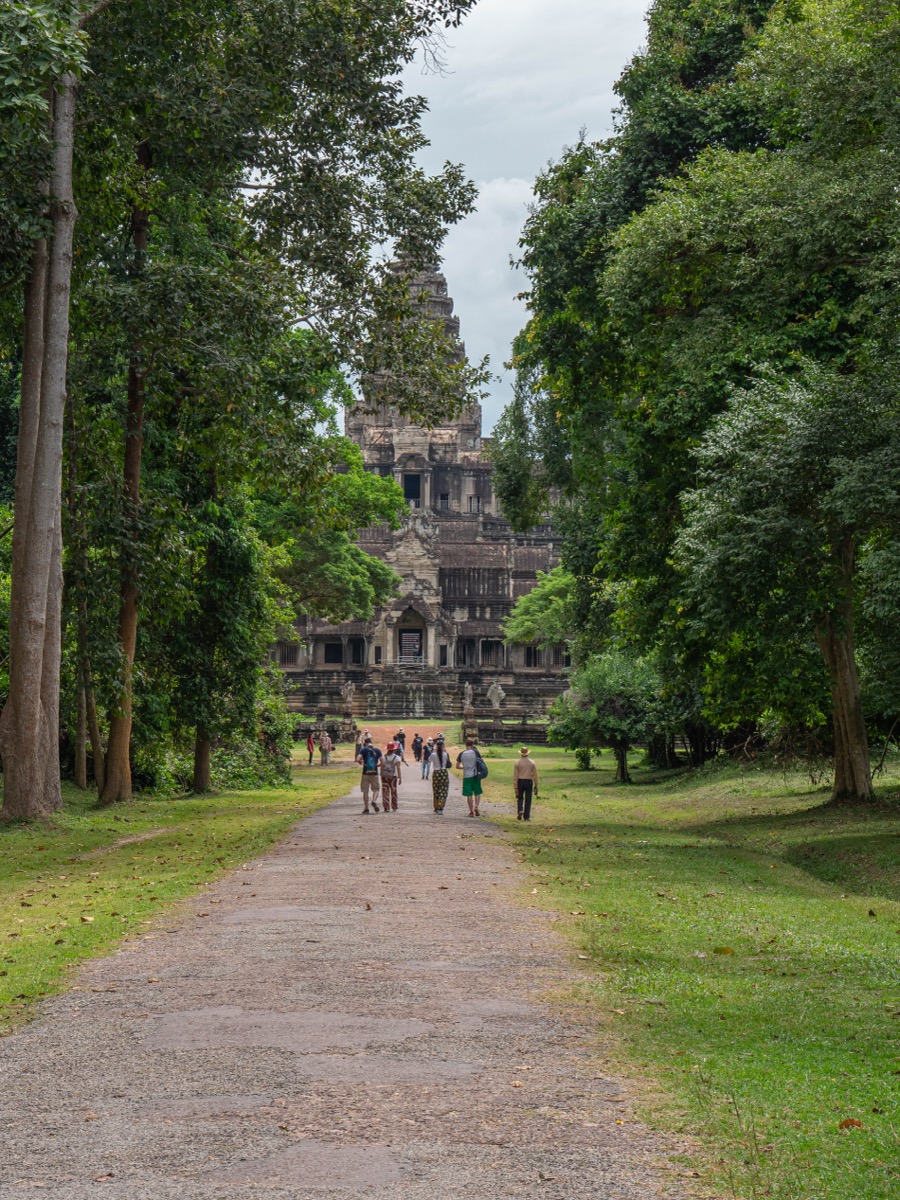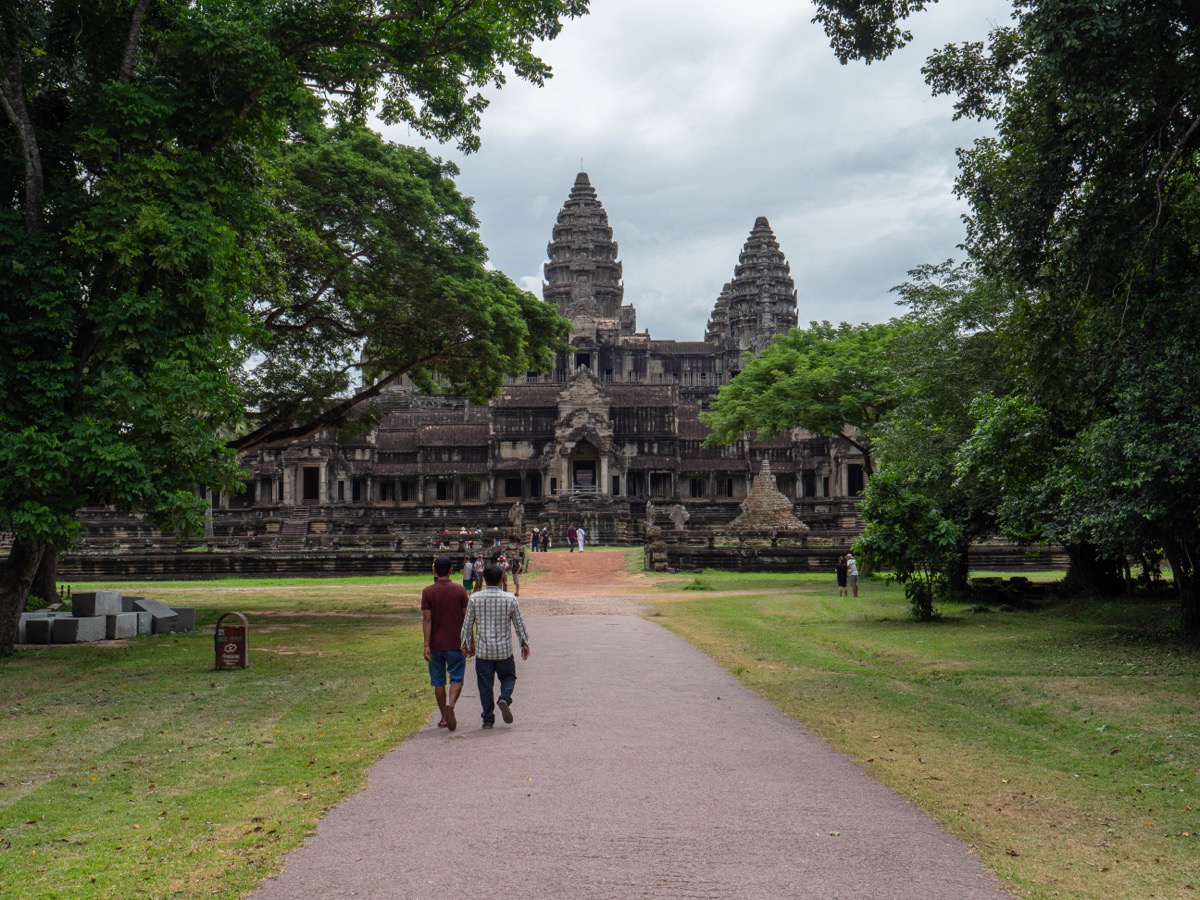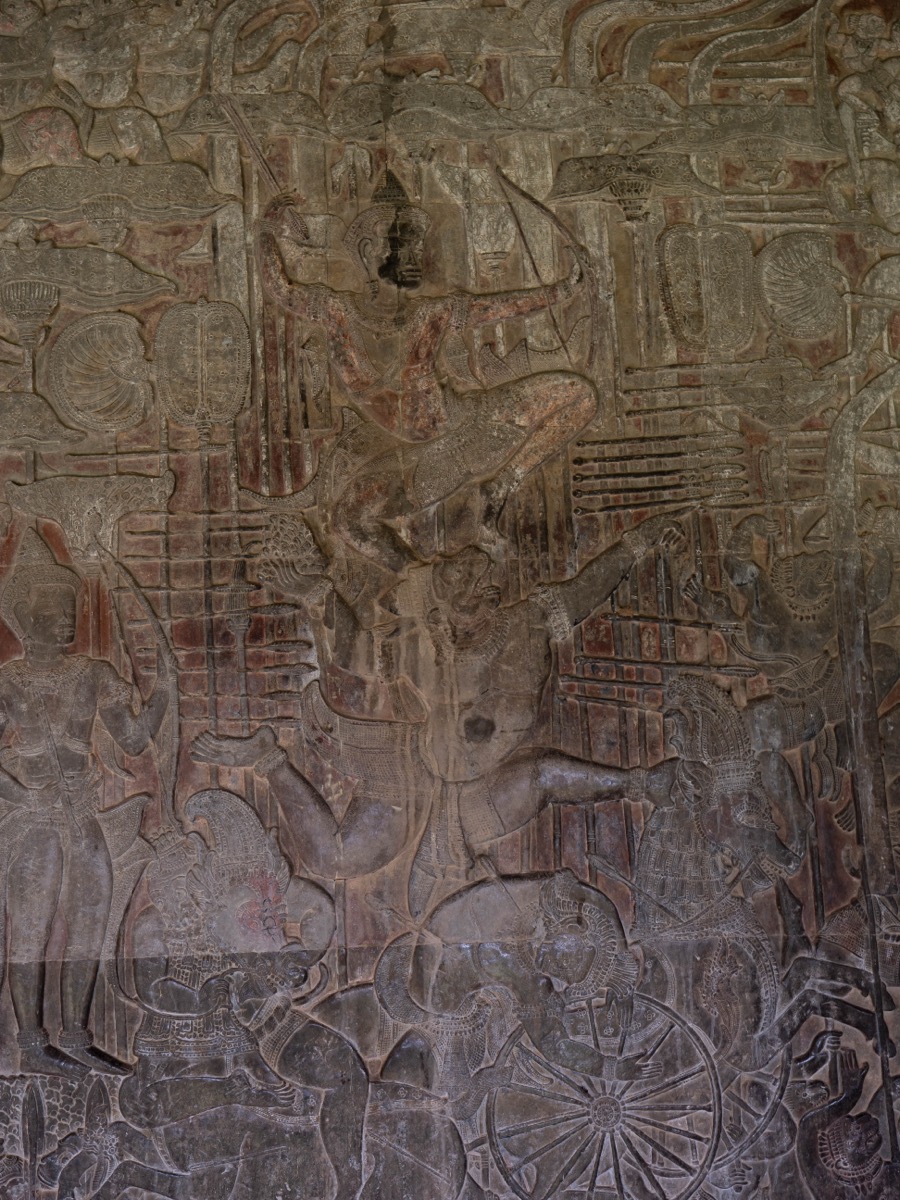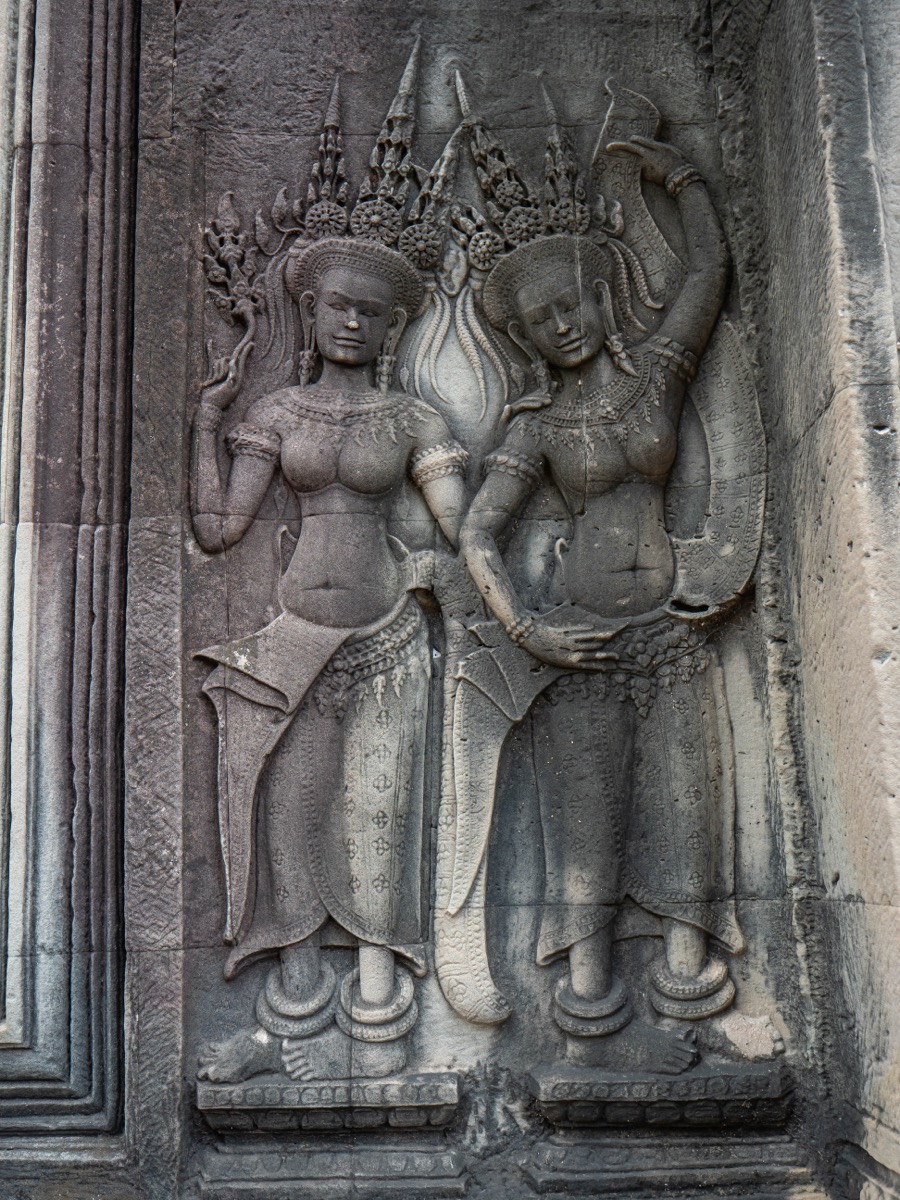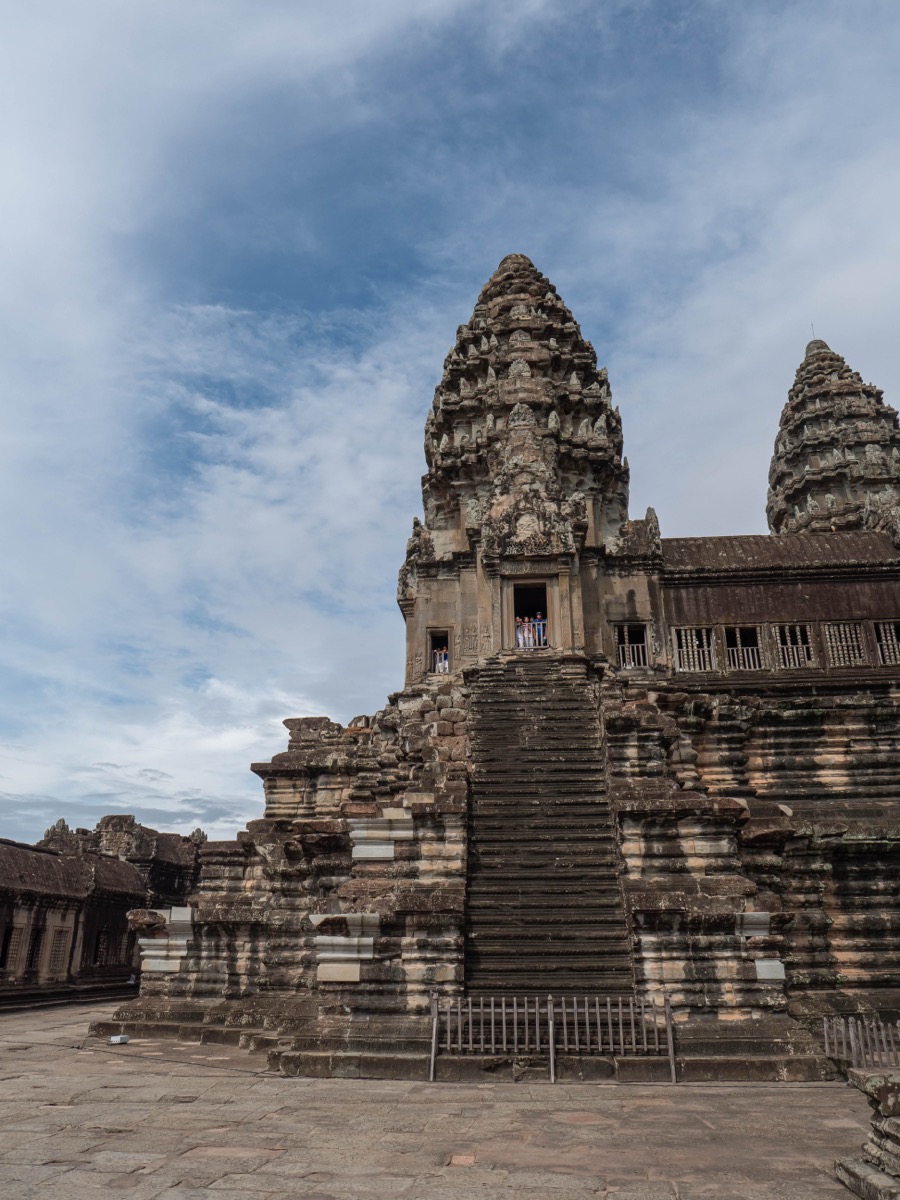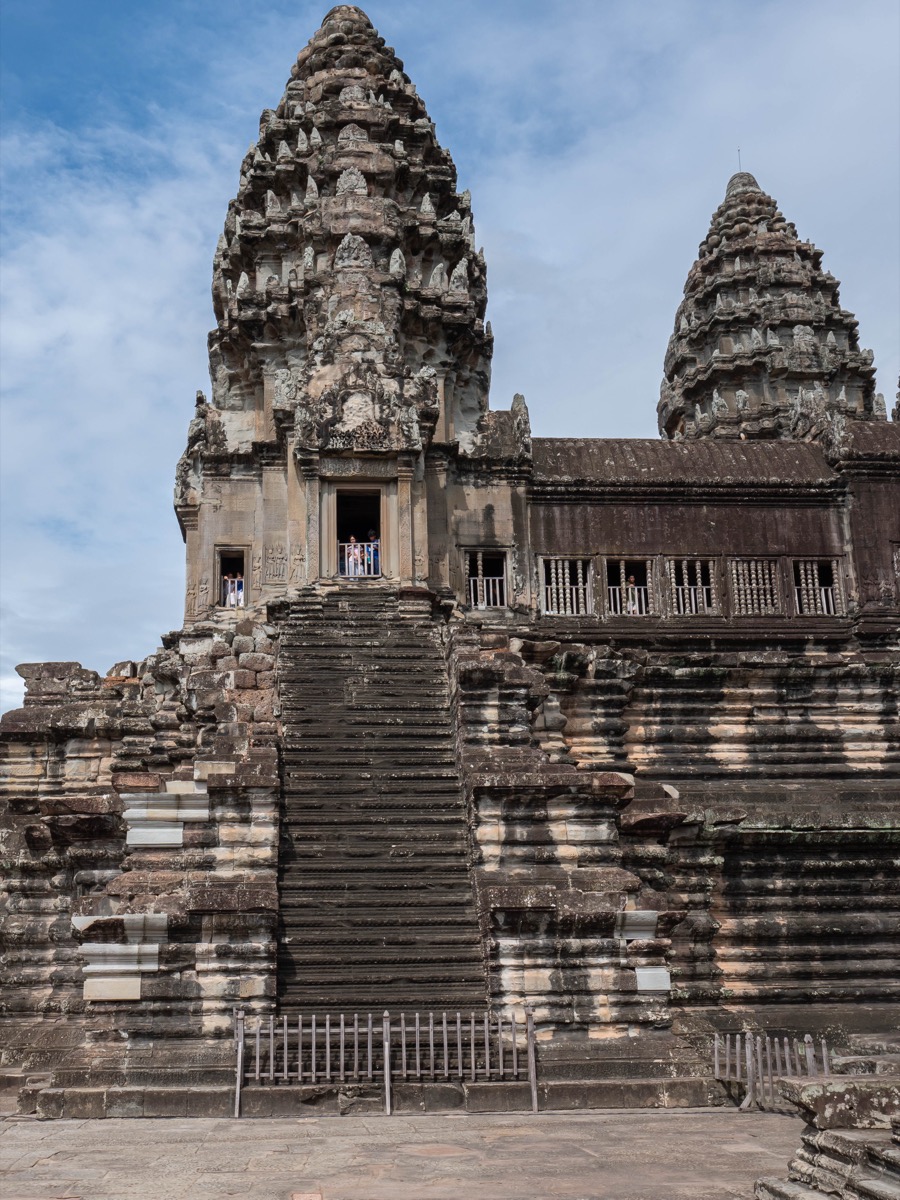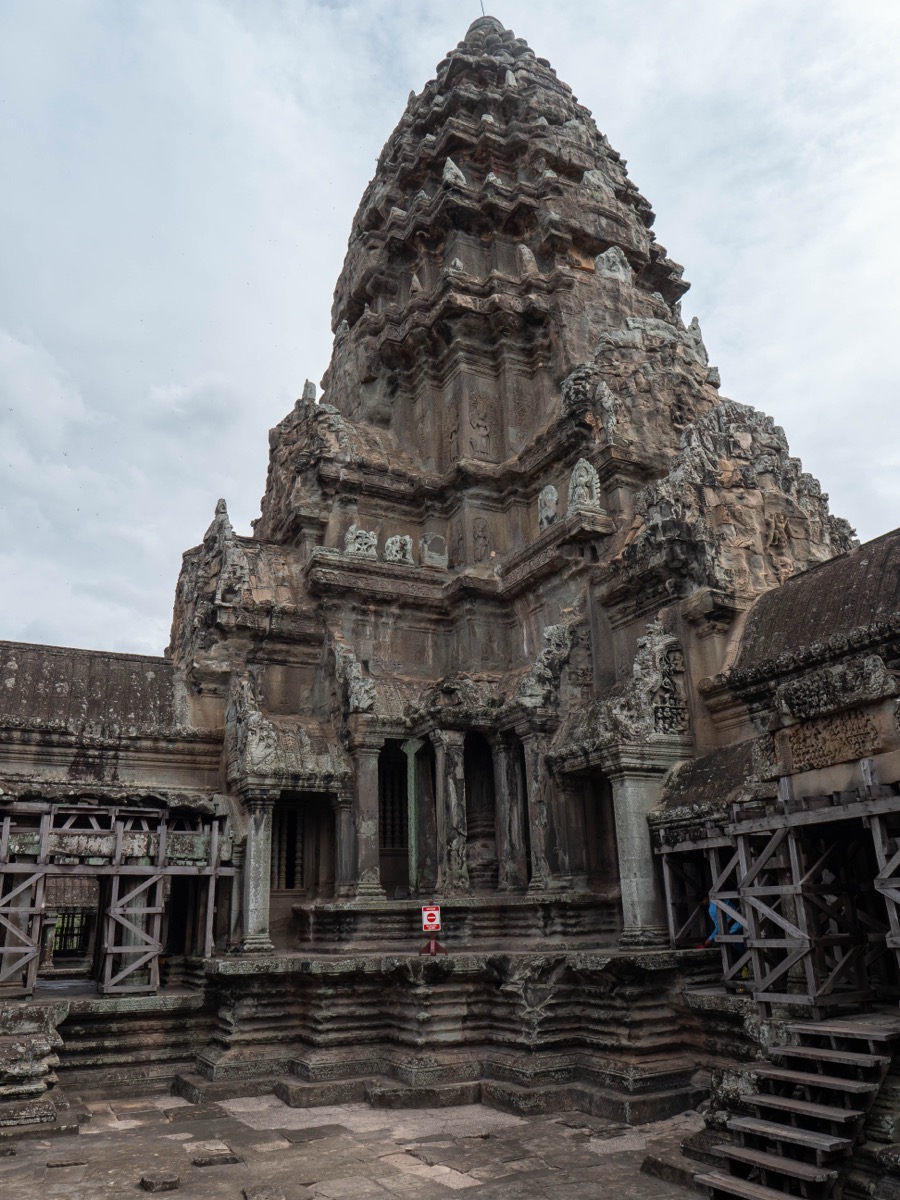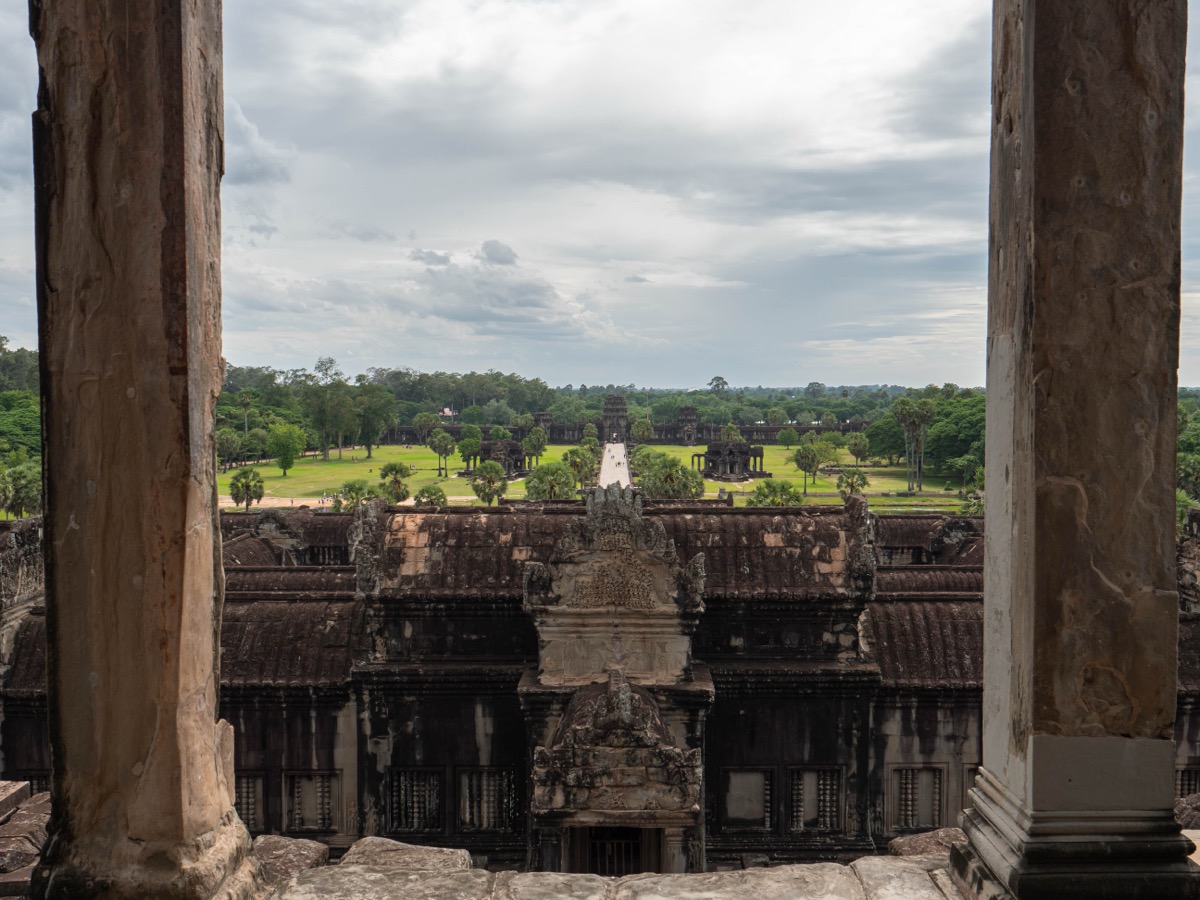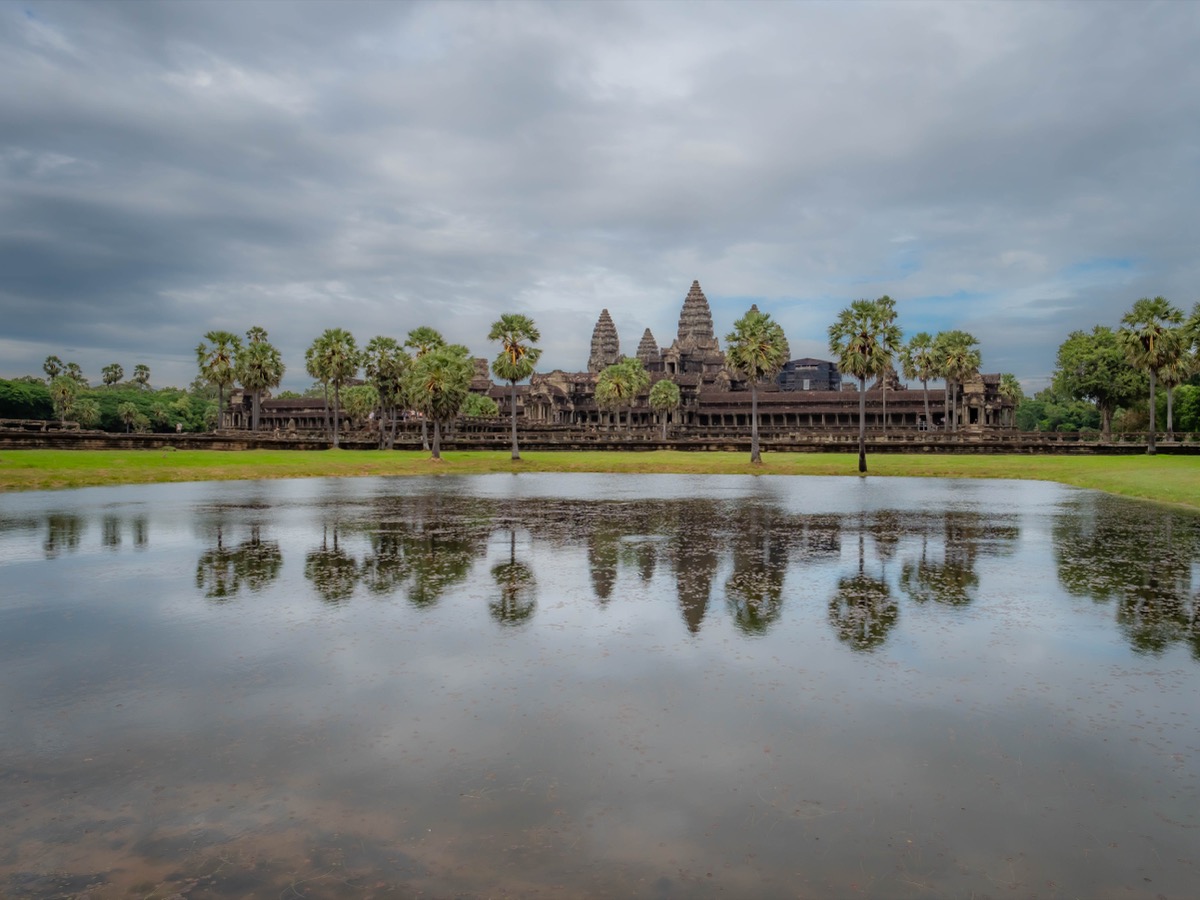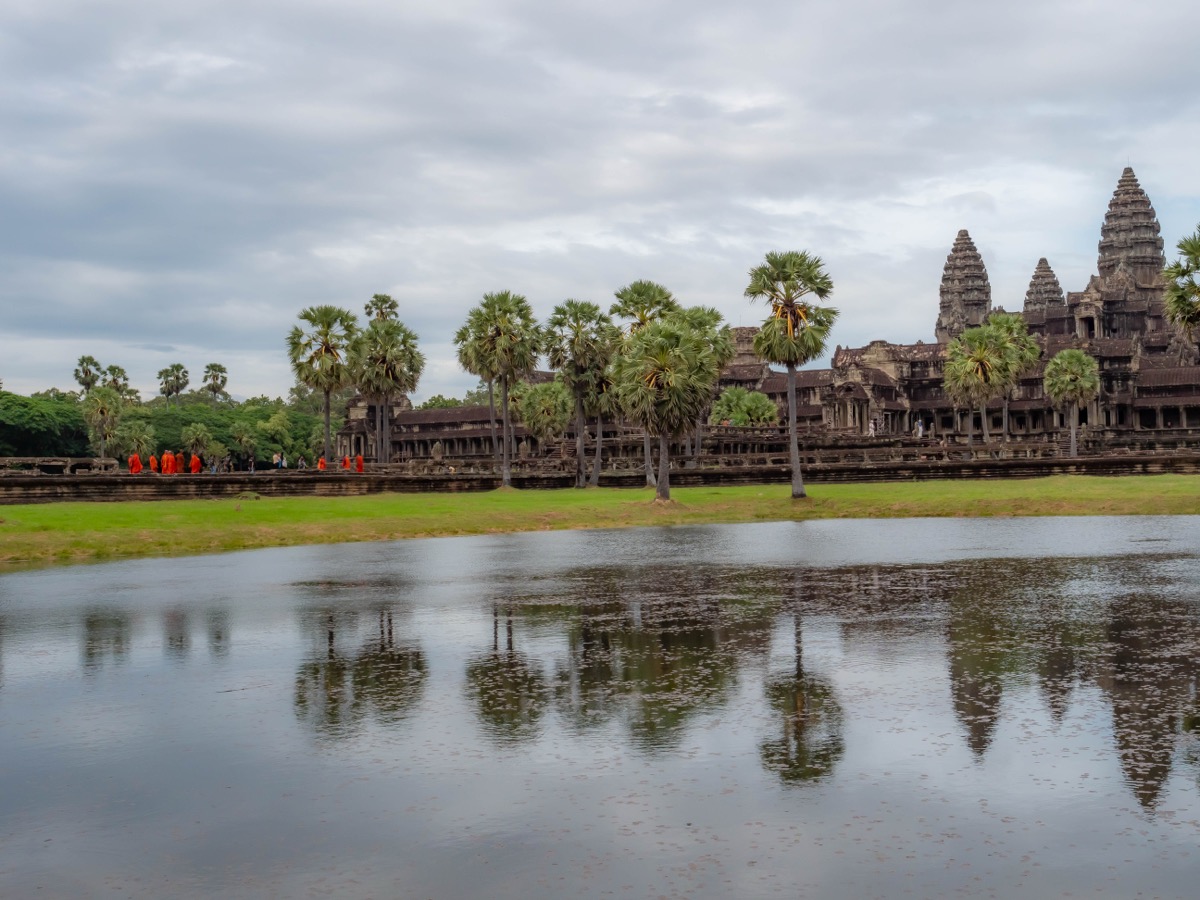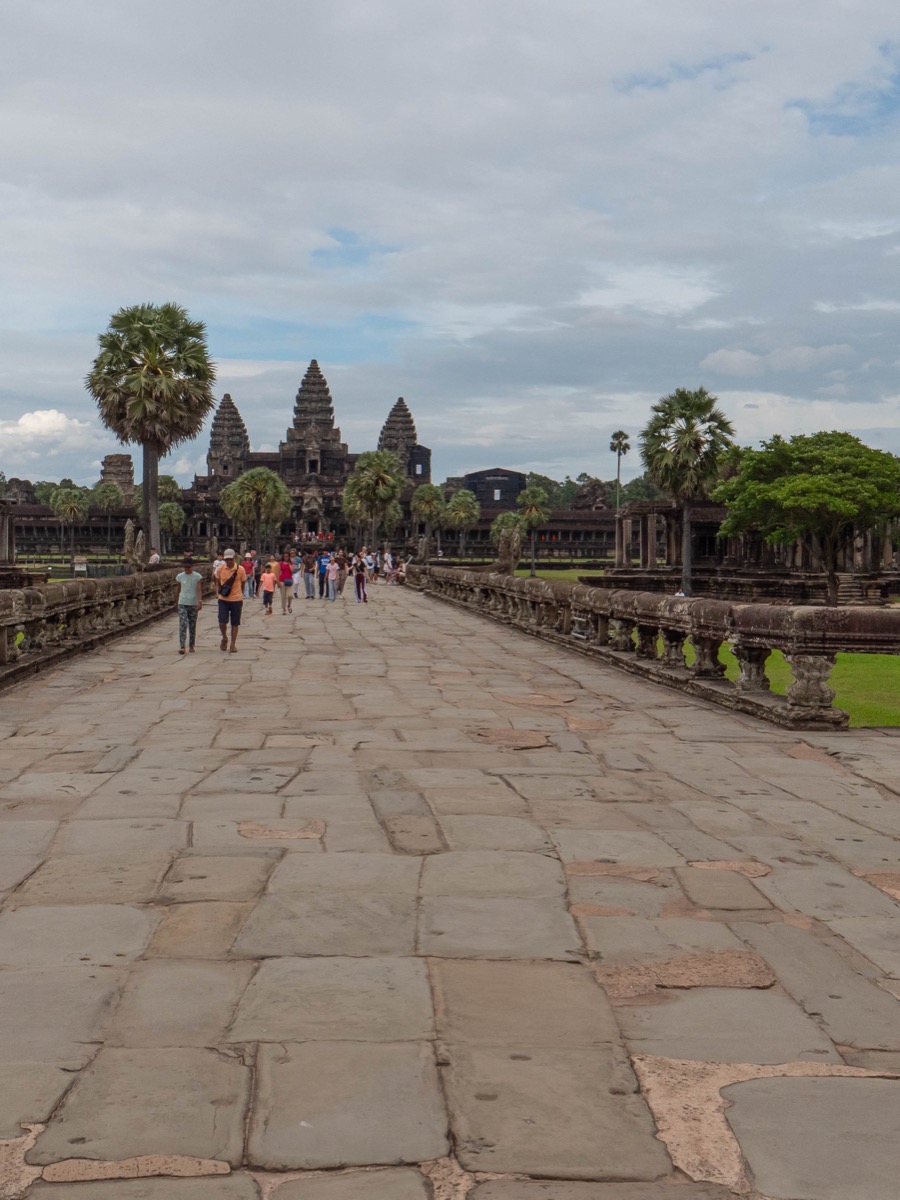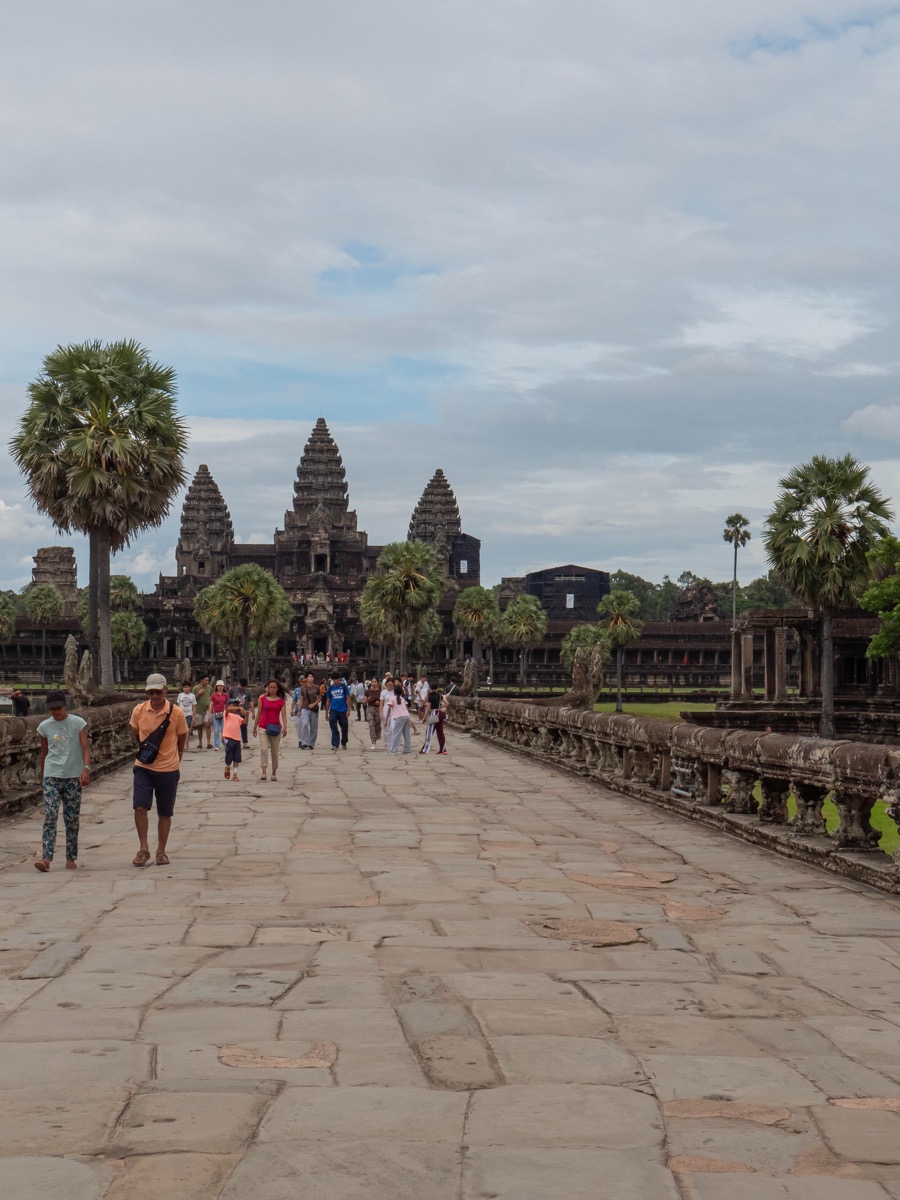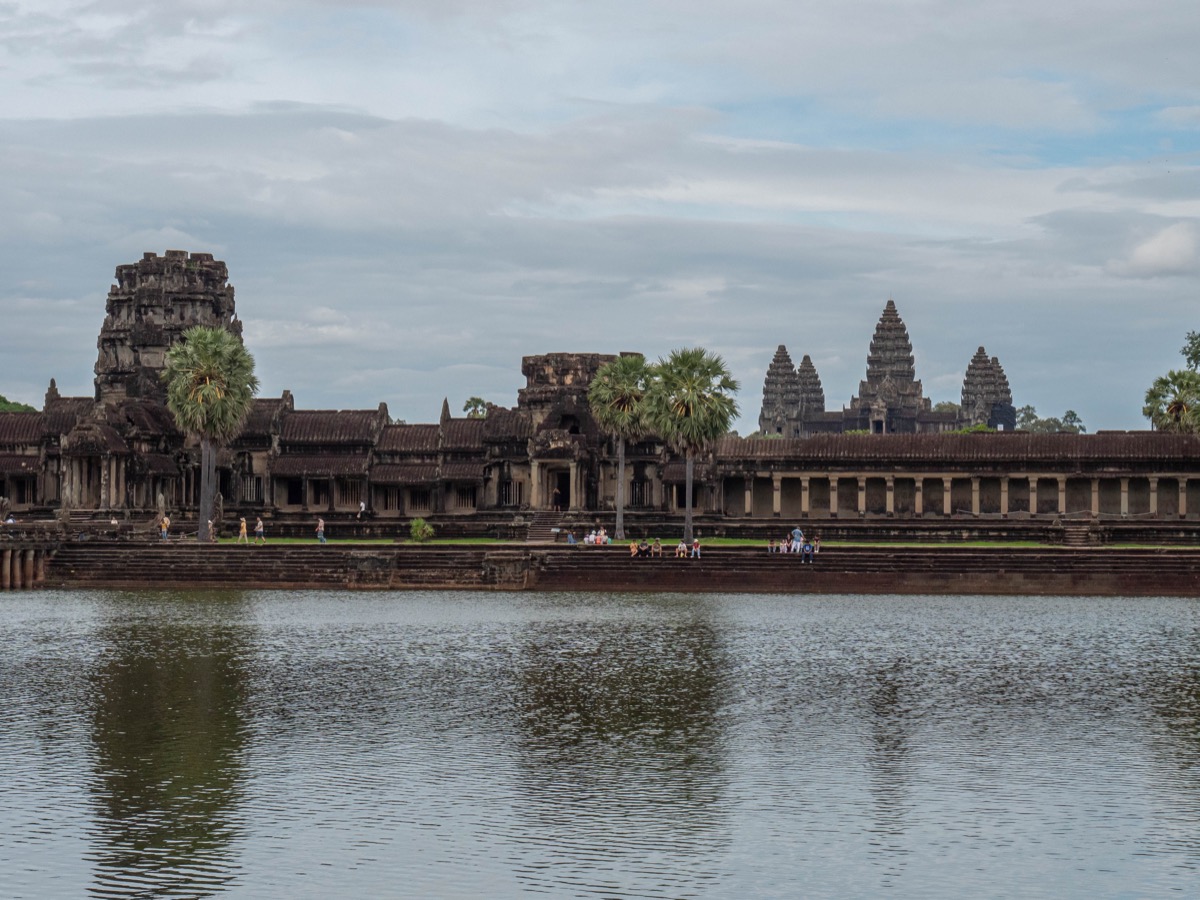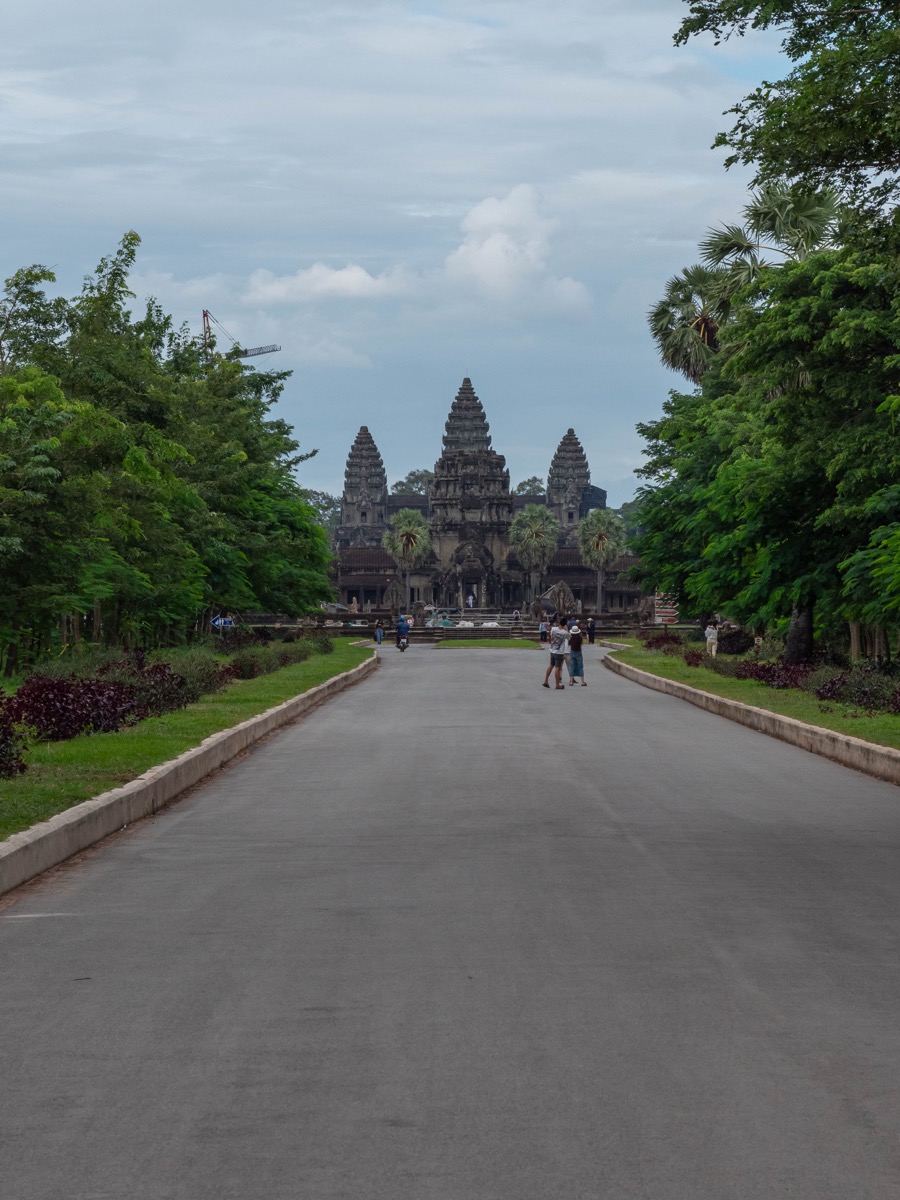Angkor Vat - ប្រាសាទអង្គរវត្ត
A colossal monument in the heart of the Cambodian forest
Angkor Vat is located 6 km north of Siem Reap, within the Angkor Archaeological Park. Covering more than 160 hectares, it is the largest religious building ever constructed. Initially a Hindu temple dedicated to Vishnu, it was later converted into a Buddhist sanctuary—a function it still serves today.
The site appears on Cambodia’s national flag, a strong symbol of the country’s cultural identity.
A 12th-century construction
Angkor Vat was built during the reign of King Suryavarman II (1113–1150), a time of great military and economic strength for the Khmer Empire.
The king’s goals:
- Assert his divine authority.
- Create a mausoleum to glorify himself.
- Unify religious beliefs around Vishnuite worship.
The construction is said to have involved thousands of workers, sculptors, priests, and architects over several decades.
Architectural features
Angkor Vat is a perfect example of classical Angkorian style:
- Central layout representing Mount Meru, the sacred mountain of Hinduism.
- Five lotus-shaped towers, with the tallest reaching 65 meters.
- Moat 190 meters wide surrounding the main enclosure.
- Galleries of bas-reliefs illustrating mythological scenes, battles, and epics from the Ramayana and Mahabharata.
Every architectural detail carries cosmological or religious significance.
Art and symbolism
The bas-reliefs are among the finest in all of Asia:
- The Churning of the Ocean of Milk, a major Hindu myth.
- Royal processions, marching armies, gods and demons in battle.
- Apsaras, celestial dancers finely carved, embodying divine grace.
The temple faces west, which is rare and likely linked to its funerary function.
Angkor Vat today
Angkor Vat remains an active place of worship, with Buddhist monks present at the site. It also welcomes millions of visitors each year.
Due to the tourist influx, conservation efforts are underway:
- Restoration of fragile structures.
- Protection from erosion and water infiltration.
- Awareness campaigns to promote heritage preservation.
Visiting tips
- Best time: sunrise for a spectacular view of the towers reflected in the pools.
- Access: via Angkor Park (one-day ticket or 3/7-day pass).
- Recommended visit duration: at least 2 to 4 hours.
- Suggested items: hat, water, comfortable shoes.
Conclusion
Angkor Vat is more than a monument: it is a synthesis of spirituality, political power, and artistic genius. It embodies the past greatness of an empire and continues to fascinate with its majestic presence. Visiting Angkor means walking in the footsteps of a civilization that, nearly 900 years ago, ruled the heart of Southeast Asia.
Angkor Vat is the most iconic temple on the site. Angkor, the archaeological complex, is often confused with Angkor Vat, the temple.
This temple, originally dedicated to Vishnu, was built in the early 12th century by the Khmer king Suryavarman II and was gradually consecrated to Buddhist worship.
Notable features:
- Largest religious structure in the world
- UNESCO World Heritage Site
- Highly photogenic view, especially from the western pool, with the temple reflected in the water
Arrival from the East entrance of the temple
We began our visit to Angkor Vat from the East entrance. This approach offered us an impressive view of the back façade of the monument rising from the surrounding forest.
Frescoes
Upper section of Angkor Vat
View of the western courtyard of the temple
View from the reflecting pool in the western courtyard
The quintessential photograph of Angkor Vat. The body of water is located in the western courtyard of the temple. These photos give the impression of a lake. It is actually a pond that reflects the beauty of the temple. This is the ideal spot to photograph the sunrise, especially when the sun rises aligned with the main stupa.
